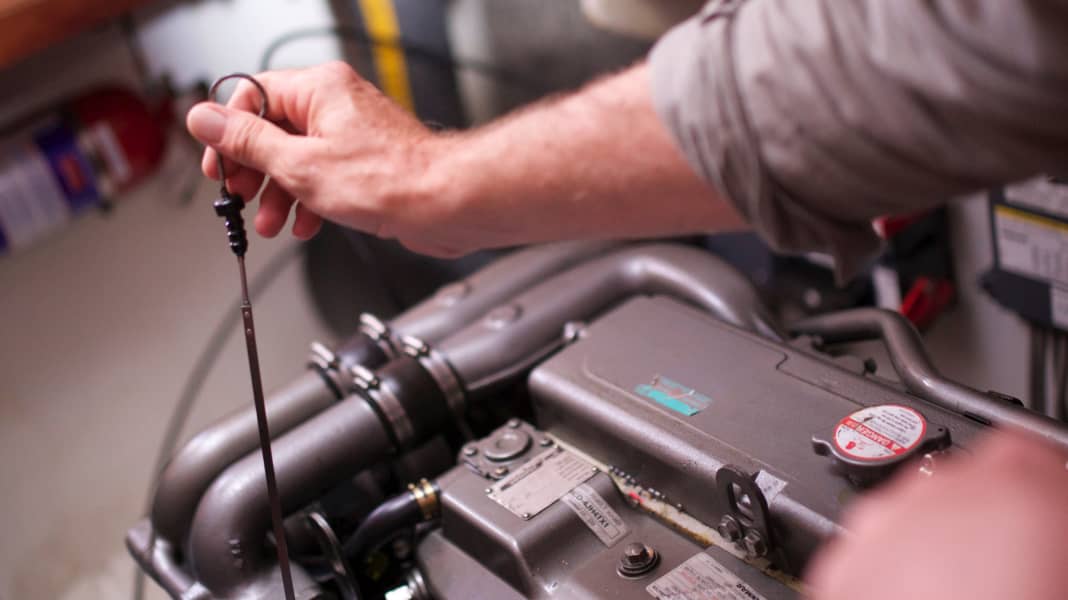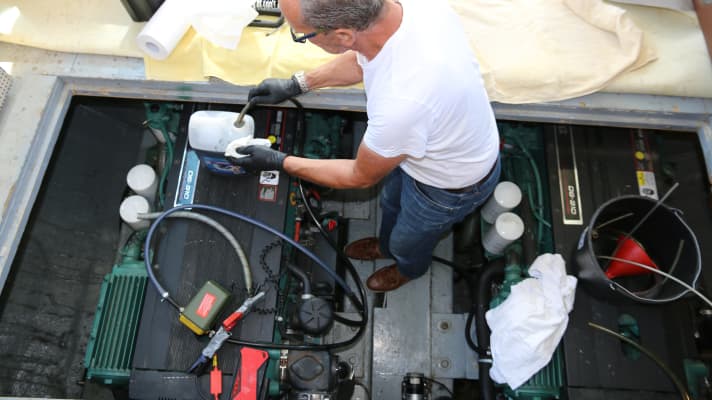
This article is part of the special season start. All parts:
- Cast off - how to get the new season off to a smooth start
- Checklist: Fit for the new season - the checklist
- Cleaning, polishing and care
- The best care and cleaning products for boats
- Last-minute tips from the experts at Pantaenius for the start of spring
- Checklist for the boat trailer
- The best tips from the Pantaenius specialist
- Changing the oil in a boat engine - here's how!
- Special pumps - changing oil in no time at all
- To check the cooling circuit
- How to renew the antifouling
- Boat equipment - the more, the better
When to change the engine oil is almost a question of faith. Some prefer to change it before winter, others postpone it until spring. No matter when, it is always important. The only question is whenHow? As a rule, it's not quite as easy on a boat as it is in a car, where you simply drain the used oil into a bowl placed underneath after loosening the drain plug. Fortunately for those who have a high-end diesel with a permanently installed suction pump.
If you don't have a large diesel engine, you will need mobile suction pumps. These are available in various designs from any well-stocked accessories dealer. The range includes simple hand pumps, electric pumps and manual vacuum pumps with an integrated collection container. This usually has a capacity of six litres and is relatively stable. Manual and electric pumps are easier to stow, but have the disadvantage that you have to carry a separate collection container on board.
We have tested various oil extraction pumps. You can read the results here:
Important: Allow the engine to warm up
It is important to warm up the engine before changing the oil. Warm oil is thinner than cold oil and is therefore easier to pump out, regardless of the pump used. After switching off the engine, the flexible plastic tube suction probe (supplied with all pumps) is inserted into the opening of the oil dipstick. This is done until it hits the oil pan - don't worry, you'll notice it.
The dipstick provides an indication of the minimum length of the probe. If the supplied probe is too thick, too thin or too short, flexible plastic tubes in various dimensions are available from accessory retailers or DIY stores. Caution: Before the first "pump stroke", check that the pipe connections on the pump are tight and that the collection container is secure. There is hardly a bigger mess than used oil in the bilge or cockpit.

For this reason alone, you should very quickly say goodbye to the "hair-raising" method of loosening the oil filter with a screwdriver driven right through the filter. A special filter spanner (available from DIY stores and accessory dealers) is a good help here. Even the best spanner will not be able to prevent oil leaks.
Cleaning cloths and a small bowl to place or hold under the filter when unscrewing are therefore important. Before fitting the new filter, check that the rubber seal is correctly seated on the filter and apply oil to the contact surface (with your finger). Very important: Only screw the filter on hand-tight (do not use tools!), otherwise you will never get it off again. It is also clear that original spare parts should be used when changing the filter.
Oil does not have to match the manufacturer's specifications
The engine oil does not necessarily have to have the label of your engine manufacturer. What is important is the prescribed viscosity (e.g. 15W/40) and specifications (API classification). In short: The information on the oil can must match the information in the operating instructions. Top up the oil to the maximum mark on the dipstick. Then start the engine and allow it to idle. It is important that the indicator lamp for the oil pressure goes out after a few seconds and that there is no oil leakage around the filter. Stop the engine, check the oil level and top up the oil if necessary. Finally, please remember that used oil and filters are hazardous waste and must therefore be disposed of accordingly - for the sake of the environment.
This article is part of the special season start. All parts:
- Cast off - how to get the new season off to a smooth start
- Checklist: Fit for the new season - the checklist
- Cleaning, polishing and care
- The best care and cleaning products for boats
- Last-minute tips from the experts at Pantaenius for the start of spring
- Checklist for the boat trailer
- The best tips from the Pantaenius specialist
- Changing the oil in a boat engine - here's how!
- Special pumps - changing oil in no time at all
- To check the cooling circuit
- How to renew the antifouling
- Boat equipment - the more, the better

